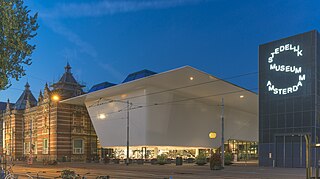
The Stedelijk Museum Amsterdam, colloquially known as the Stedelijk, is a museum for modern art, contemporary art, and design located in Amsterdam, Netherlands.

Willem Hendrik "Wim" Crouwel was a Dutch graphic designer, type designer, and typographer.
Design Academy Eindhoven is an interdisciplinary educational institute for art, architecture and design in Eindhoven, Netherlands. The work of its faculty and alumni have brought it international recognition, and is widely regarded as one of the world’s leading design schools.
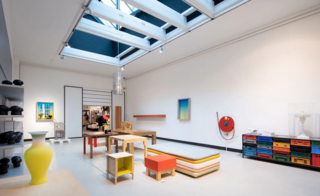
Droog is a conceptual Dutch design company situated in Amsterdam, Netherlands. Droog has realised products, projects, exhibitions and events. Droog is an internationally renowned design label [1] and one of the most famous exponents of Dutch Design. Droog worked with well known designers such as Marcel Wanders, Hella Jongerius, Tejo Remy, Richard Hutten, Ed Annink, Jurgen Bey and Joris Laarman.

Emmy Eugenie Andriesse was a Dutch photographer best known for her work with the Underground Camera group during World War II.
Jenske Dijkhuis is Dutch designer, working primarily with spatial concepts, currently living in Amsterdam and working in an old factory building in Zaandam.
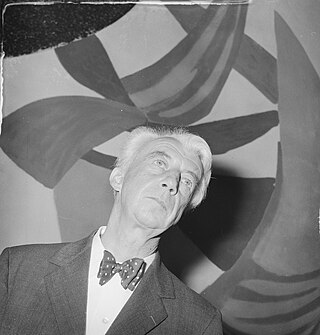
Jonkheer Willem Jacob Henri Berend Sandberg known as Willem Sandberg was a Dutch typographer, museum curator, and member of the Dutch resistance during World War II.

Dutch Design is a term used to denote an informal artistic school of design in the Netherlands, particularly product design. More specifically, the term refers to the design esthetic common to designers in the Netherlands.
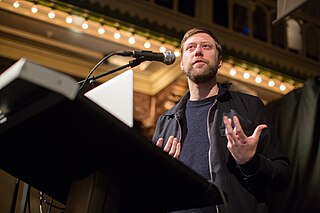
HJ Grievink is a Dutch graphic designer and editor based in Amsterdam. He works on a range of commissioned and self-initiated projects positioned at the intersection of graphic design and visual culture research. Grievink is best known for designing and co-editing the book Next Nature: Nature Changes Along With Us, and for developing the memory games, Fake for Real and Brand Memory.

Edwin van Gelder is a Dutch graphic designer and art director based in Amsterdam. He graduated from the graphic design department at the Utrecht School of the Arts in 2004. In 2005 Van Gelder founded graphic design studio Mainstudio.
Makkink & Bey is an architecture and design practice based in Rotterdam and also in the Noordoostpolder. The studio, founded in 2002, is led by architect Rianne Makkink and designer Jurgen Bey, and works in various domains of applied arts including public space projects, product design, architecture and exhibition design.
Eva Pel is a Dutch visual artist living and working in Amsterdam.
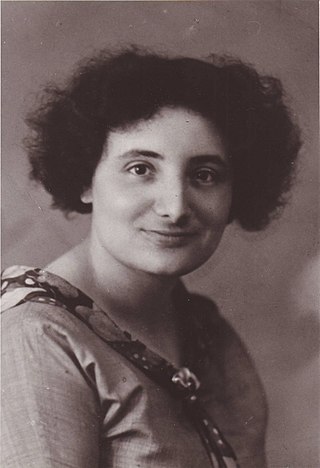
Frederika Sophia "Fré" Cohen was a Dutch artist and graphic designer.
Max Bruinsma is a Dutch design critic, editor, curator, and educator.
Geerten Maria Ten Bosch is a Dutch graphic designer and illustrator.

Renny Ramakers is a Dutch art historian, curator, design critic, and co-founder and director of the Droog design foundation. Ramakers writes articles, gives lectures, initiates projects and curates exhibitions in the field of art and design. In 2007 she was awarded the Benno Premsela Prize, in 2019 the IJprijs for her cultural contribution to the city of Amsterdam, and in 2018 she received a Dutch Royal Award for her work in the field of Dutch Design.
Schepers Bosman is a Dutch fashion designer duo consisting of Sanne Schepers and Anne Bosman.
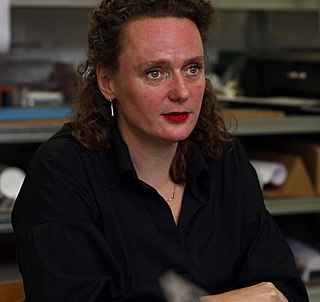
Hansje van Halem is a Dutch graphic designer and type designer. Her work is typified by geometric, repetitive, sometimes almost psychedelic patterns. She works at the intersection of text, illustration, pattern, colour, texture, distortions, interruptions, variations, symmetry, systematic approach and irregularities. Van Halem combines the more open rules of patterns with the tighter ruleset of typography and explores the boundaries of type design. She uses the viewer’s distance to the work to move at the edge of legibility and non-legibility. In her understanding background and type should become one layer. Important to her are the process itself, “playing” around and working with trial and error. Her commissions rather revolve around the creation of identities, whole covers and patterns than individual fonts.

The Sandberg Institute is a postgraduate institution in Amsterdam that offers the master's programme of the Gerrit Rietveld Academy. It is named after Willem Sandberg. Since 1995, the Sandberg Institute has been offering a number of master's programmes in art and design. The director of the Sandberg Institute since 2010 is Jurgen Bey.

Jacqueline Royaards-Sandberg was a Dutch stage actress of the 19th and 20th centuries. She began acting on stage in 1897 and did it professionally from 1901. Royaards-Sandberg worked for the Royal Dutch Theater Association, the Het Masker, the Amsterdam Theater Company, the Dutch Comedy, Theater, Ensemble and the Amsterdam Toneel companies.














